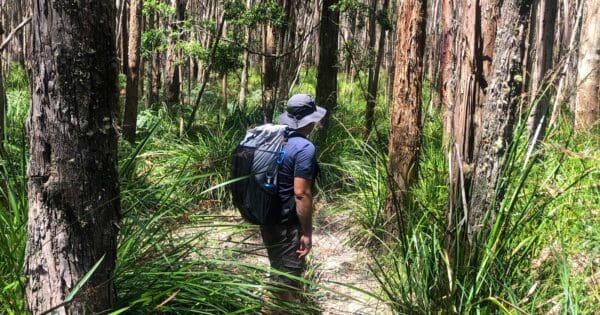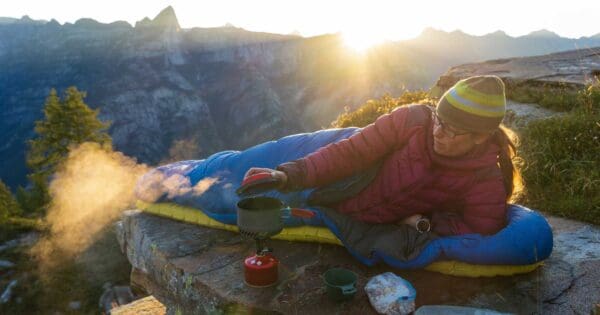A common question for overnight hikers: quilt or sleeping bag?
Both provide warmth under the stars, but which one reigns supreme for your next adventure? Let’s dive into the warmth, comfort, and practicality of each to help you decide.

What’s a quilt?
Imagine a giant, rectangular blanket with clever clips or straps to secure it around your sleeping pad. That’s a quilt! Unlike a sleeping bag, it ditches the hood and back insulation, focusing warmth where it matters most – on top of you. This minimalist design shaves weight and packs down tiny, ideal for ultralight enthusiasts.
Why use a quilt?
- Lighter and more compact: Say goodbye to bulky bags! Quilts can be 20-30% lighter, a huge plus for long treks.
Temperature flexibility: Feeling toasty? Unfurl the quilt like a blanket. Need extra coziness? Cinch it tight around your pad. Quilts adapt to your changing needs. - Layering freedom: Wear more clothes on chilly nights, less on balmy ones. Quilts let you fine-tune your comfort without feeling confined.
- Side sleeper friendly: Toss and turn all you want! Quilts don’t restrict movement like mummy bags.

Sleeping bags:
- Warmth champion: The enclosed design traps heat effectively, making them ideal for colder weather.
- Draft-free cocoon: No sneaky chills here! Sleeping bags seal you in, shielding you from wind and drafts.
- Easy to use: Simply crawl in and zip up – perfect for beginners or chilly sleepers who value convenience.
- Head and neck warmth: Hoods offer extra insulation for your noggin, crucial in frigid temperatures.
So, which one wins?
The truth is, there’s no one-size-fits-all answer. It depends on your priorities:
- Ultralight backpackers and warm sleepers: Quilts rule! Their weight savings and temperature flexibility are perfect for minimalist treks in moderate climates.
- Cold weather campers and comfort seekers: Sleeping bags come to the rescue! Their warmth and draft protection ensure a cozy night’s sleep, even in frosty conditions.
- Side sleepers and indecisive adventurers: Consider a hybrid bag-quilt! These offer the best of both worlds, with detachable hoods and footboxes for ultimate versatility.
Ultimately, the best choice is the one that makes you feel happy and confident on the trail.
Regardless of which option you choose, invest in a good sleeping pad. It’s the unsung hero of warmth, insulating you from the cold ground and boosting your cozy factor.
I hope this post helps you navigate the quilt vs. sleeping bag debate. Remember, the most important thing is to choose gear that makes you feel comfortable and prepared for your next outdoor adventure.






I have both but have to say, I do love my quilt.
Darren Edwards I prefer a sleeping bag with full length zip.
If it’s hot I can unzip it and use it like a quilt.
Yes it’s heavier than a ‘quilt’ but better insurance if weather turns feral.
I have never heard of hybrid bag-quilt with detachable hood, etc. Can you suggest some brands to look up?